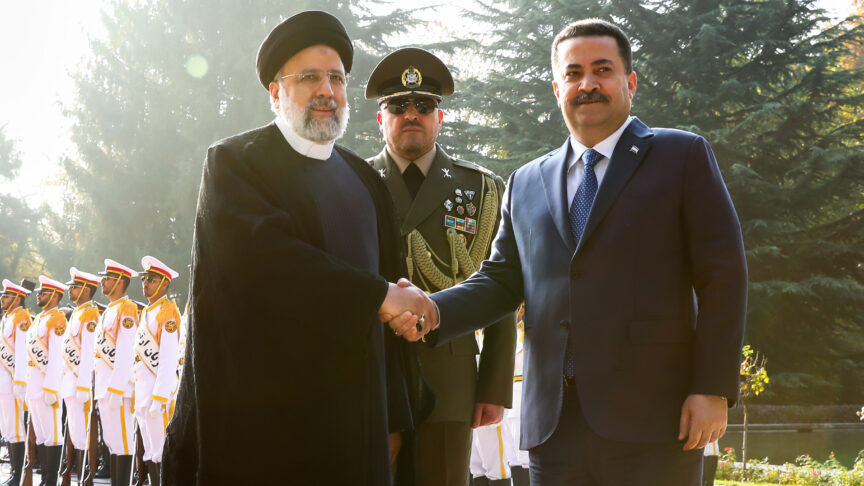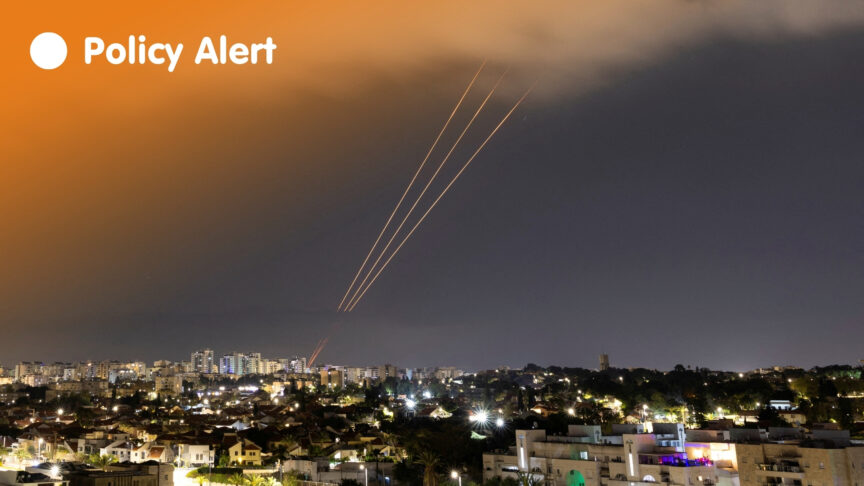Jerusalem protests: violence in the vacuum
There is still the chance, just, to limit further instability and bloodshed in Israel-Palestine.
We are currently witnessing two, related, developments that should focus European Union attention on the dangerous trajectory the Israeli-Palestinian conflict is following, and the need for urgent corrective action to head off further deterioration and violence on the ground.
The first occurred yesterday amid considerable Israeli and US pomp celebrating the inauguration of the United States’ embassy in Jerusalem. In attendance was a senior US delegation including Ivanka Trump and Jared Kushner, Treasury secretary Steven Mnuchin, and the US ambassador David Friedman (an avowed supported of Israeli settlements). Senior officials have repeatedly stressed that the US decision to move its embassy from Tel Aviv to Jerusalem, and accompanying recognition of the city as Israel’s capital, merely reflect existing realities, and will ultimately bring stability and peace to the region.
In the short term at least, the United States’ policy decisions have provoked quite the opposite, prompting Mahmoud Abbas to take the unprecedented step of cutting off the PLO’s diplomatic relations with the US. Palestinians have been particularly angered by the United States’ overt siding with Israel on such a sensitive issue, and by its upending of over 70 years of international policy, based on UN Resolution 181 (1947), imposing a strict non-recognition of either side’s sovereignty in the city, and requiring its status to be settled as part of a final Israeli-Palestinian peace agreement.
This also came after the US slashed its funding to UNRWA (the UN agency charged with caring for Palestinian refugees) in retaliation for what it has described as Palestinian unwillingness to engage in peace talks with Israel – this despite the fact that the Trump administration has yet to formally table any peace initiative.
An hour and a half drive away, events in Gaza would seem to further belie American assurances about the benefits of its Jerusalem moves. There, tens of thousands of Palestinians protested along Israel’s border against the inauguration of the US embassy and Israeli actions. Similar protests were held in the West Bank. This marked the culmination of weeks of confrontation with Israeli security forces, and by the end of the day 59 Palestinians had been killed by Israeli fire and 1,960 wounded.
While wars in Gaza may have become tragically routine, the context in which the next will occur is far from so
Although relatively non-violent, protests in Gaza have been driven by deep popular anger over the dire socioeconomic and humanitarian conditions, and lack of hope, afflicting the Strip and its residents. This is the product of an 11-year joint Israeli-Egyptian closure of Gaza, combined with the legacy of three destructive wars between Hamas and Israel, and a more recent set of sanctions imposed by Abbas’s Palestinian Authority based in the West Bank. Although supported by Hamas and other Palestinian factions, these protests have been driven by grassroots Palestinian activism.
Although these protests will likely reach their apogee today as Palestinians commemorate the Nakba (in which they mourn the loss of ‘historic’ Palestine following their defeat by Israel in 1948), they are unlikely to disappear entirely. The dire conditions in Gaza, and high Palestinian death toll, will continue to stoke Palestinian anger, driving confrontations with Israel for weeks to come. The potential of UNRWA cuts to its service in Gaza (including possibly not being able to reopen its schools in September and laying off staff) will add more fuel to the Gaza fire.
Growing popular anger among Gazans, and the lack of effective means for addressing their grievances, will pose real dilemmas for the Strip’s Hamas rulers. While it is noteworthy that Hamas has thrown its weight behind the protests rather than seek renewed military confrontation with Israel, the lack of tangible results in return for an escalating and disproportionate Palestinian body count risks vindicating those within the Islamist movement advocating violence as the only effective means of confronting Israel and obtaining concessions.
While wars in Gaza may have become tragically routine, the context in which the next will occur is far from so. Firstly, it should be genuinely asked whether the Strip, its society, and Hamas will survive a fourth bloody war. While the EU and the US consider Hamas a terrorist organisation, Israel recognises its utility in governing the Strip, imposing order, reining in more radical salafi jihadi factions, and policing a ceasefire with Israel. Its removal, or decision to step back from daily governance, would throw all this into question.
Perhaps more fundamentally, the next war would occur in a context devoid of any viable conflict management system. Since assuming office, Donald Trump and his administration have challenged the core components of the two-state solution, and the architecture put in place since the 1993 Oslo Accords which has shaped international peace-making efforts to date. But if the Oslo-configured Middle East Peace Process has ceased to be, and the two-state solution has vanished from the horizon, there is no new conflict management system model to fill the vacuum, besides what seems to be an Israeli (and US) drive for total Palestinian submission.
All of this is occurring against the backdrop of Palestinian political weakness and fragmentation. Among other things, this has prevented the Palestinian liberation movement from articulating a new strategy that can effectively deal with these new realities. But the continued absence of any real prospects for ending the occupation, combined with Israeli violations of international law under American cover, will inevitably impact on Palestinian calculations over the longer term. And indeed, the belief that sovereignty through diplomacy is untenable is already translating into growing popular support for alternative strategies and tactics for ending the occupation. The protests supported by Hamas in Gaza are one example.
While these protests have remained relatively limited in the West Bank, due in large part to the efforts of PA security forces, it is quite possible that large-scale mobilisation could materialise in the future against both Israel and the PA. It is also possible that the disproportionate use of violence by Israel translates into greater Palestinian support for a return to armed resistance, or at least nurtures more nihilistic violence against Israelis. The only certainty is that future Palestinian strategies and tactics will be shaped by continued escalation in Gaza, mobilisation around Jerusalem, and by the nature of the post-Abbas leadership transition which looms in the near future.
For now, though, it is still not too late to limit future instability and uncertainty. In Gaza, this means pushing for an easing of Israeli, Egyptian, and PA sanctions on the Strip, as well as greater progress in intra-Palestinian reconciliation talks, including modifying the EU’s current no-contact policy on Hamas to allow for political engagement with moderate figures within the movement. As Tareq Baconi wrote recently, the EU should also wield its diplomatic power to push for gas production from Gaza Marine which would provide Palestinians with energy sovereignty and ensuring a sustainable future for Gaza. All of this can act as important ways of anchoring Hamas’s commitment to non-violent strategies and alleviating conditions in the Strip.
In the West Bank, the EU and its allies should press Abbas to rescind his punitive measures against Gaza’s electricity and healthcare system, which have increased humanitarian suffering there. They should also press for Palestinian national elections, and a revival of Palestinian representation mechanisms such as the Palestinian Legislative Council and the Palestinian National Council , to help smooth the post-Abbas leadership transition and inject new life into the Palestinian liberation movement.
The European Council on Foreign Relations does not take collective positions. ECFR publications only represent the views of their individual authors.


